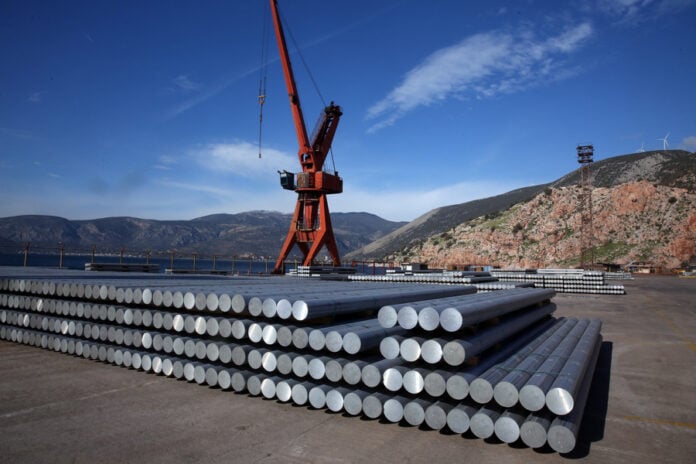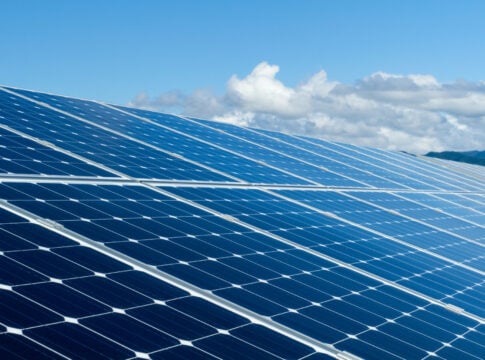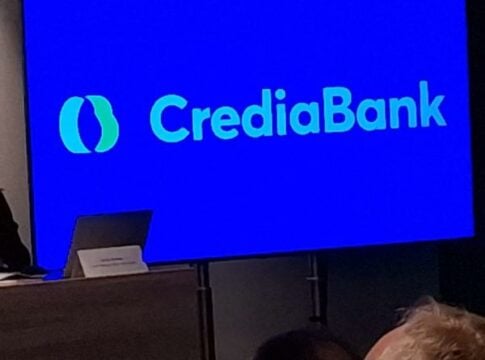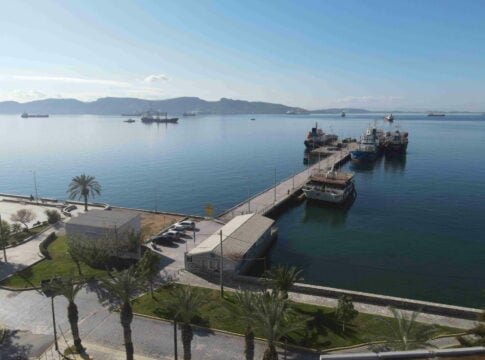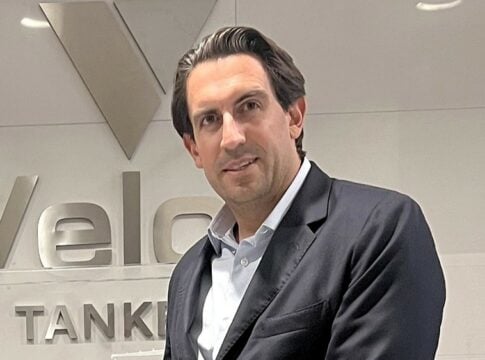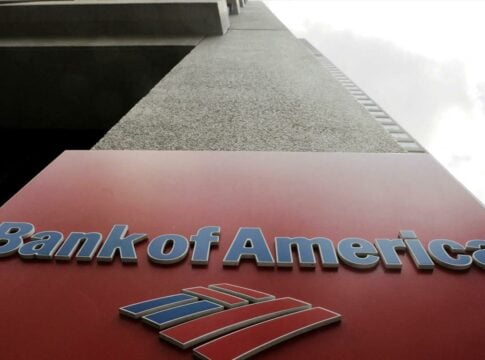Metlen Group is preparing for new strategic moves in the sector of critical raw materials, seeking a leading role on behalf of Europe and Greece.
According to sources, the group plans to proceed with new investments and collaborations in the immediate future, following the investment of 295.5 million euros, which concerns the expansion of the industrial alumina production unit and the integration of gallium into production for the first time.
The next investment moves, in addition to the capitalization of Metlen’s involvement in gallium production for the past 5 years, concern the group’s armoring in the issue of raw material, bauxite, as well as the strengthening of its presence in the new status in the international alumina market.
According to industry’s representatives, 2025 will be Metlen’s year of investments in metallurgy and strengthening its international footprint.
The plan is reportedly based on three pillars. The first concerns the production of gallium, which has already been announced.
The second is the change in the production process by strengthening the equipment of the factory facilities of Aluminum of Greece in Agios Nikolaos, Boeotia, to the standards of a modern electronic unit with controlled production costs, which is a critical success factor for the energy-intensive processing of Greek bauxite in particular (due to its hardness), and ensuring high efficiency of international standards and competitiveness so that the company can respond to price fluctuations.
The third pillar concerns investments in the raw material, bauxite and the main derivative alumina, which is important as the price has risen from $319/ton to $504/ton. It is worth noting that Greek bauxite has high quality characteristics and is rich in alumina but requires energy for its production compared to imported or tropical bauxite. It should be noted that Greece is the largest bauxite producing country in the European Union with 85% of total production and 12th in the world and Metlen is the only vertically integrated bauxite, alumina and primary aluminum and now gallium production unit operating in Europe.
MOU Metlen – H.S.G.M.E.
In this context, Metlen has reportedly initiated a strategic cooperation and the signing of an MOU with the Hellenic Survey of Geology & Mineral Exploration (H.S.G.M.E.). The potential partnership between the two parties is expected to pave the way for the survey and identification of Greek bauxite deposits, which is considered qualitatively superior, rich in alumina and, by extension, gallium.
At the same time, this partnership is expected to contribute to the creation of the appropriate conditions and institutional interventions that are absolutely necessary to overcome the obstacles to the identification of bauxite deposits, access to them and their exploitation with modern environmental and technological standards, following the underground mining method.
Their strategic cooperation also concerns the use of modern technological methods for calculating reserves of the raw material, in order to prepare a completely accurate map so that our country can gain a significant geostrategic advantage in the developments that are underway specifically in the sector of critical mineral raw materials and in particular in the bauxite-alumina-aluminum value chain.
Milestones
The investment steps that the Metlen group has implemented in the metallurgy sector include the key milestone of the acquisition of Imerys’ bauxite deposits, which now makes it the largest bauxite producer in the European Union, strengthens the vertically integrated production model and allows the exploration and exploitation of opportunities, such as supporting Europe’s supply of critical raw materials (e.g. gallium) and rare earths (scandium).
Another milestone is the acquisition of Ghana’s deposits and the support of this specific investment by the European Union’s Global Gateway platform, which led to its inclusion in the list of flagship investments for 2025, confirming Metlen’s role as a catalyst for promoting international collaborations and sustainable investments to strengthen Europe’s strategic autonomy in critical raw materials.
The Global Gateway supports investments with the participation of European companies in countries outside the European Union in the sectors of energy, transport, health and education, with a priority for 2025 in Africa and the Western Balkans.
It should be noted that Metlen has stated that together with GIADEC (Ghana Integrated Aluminium Development Corporation) they will evaluate the possible construction of an alumina production unit with a projected annual production capacity of up to 1.5 million tons. It is recalled that the current alumina production in Agios Nikolaos, Boeotia, amounts to 865,000 tons per year. With the expansion of the existing unit announced, Metlen will achieve a total annual production of 1.25 million tons of alumina, while Greece will be ranked among the 12 largest alumina producers in the world.
Alumina production and demand – gallium
The demand for aluminum, which determines the demand for alumina at the international level, has been growing continuously in recent years and because it is driven primarily by the construction and automotive sectors, but also by the course of the packaging and machinery sectors, it is expected to continue to grow.
In particular, in the area of direct interest of METLEN (Europe, North Africa, Middle East and Black Sea) it is expected that the supply-demand balance of metallurgical alumina will remain in deficit for the coming years (according to Wood-Mackenzie data, in 2025 the deficit in Europe will be over 2.5Mt, while in the Middle East, North Africa and Black Sea at 9.5Mt).
The global market for gallium currently stands at 883 tons, while Europe’s needs in 2024 were 61 tons and are estimated to reach 109 tons in 2030. Gallium arsenide and gallium nitride represent 94% of global consumption. Gallium arsenide (GaAs) is used as a raw material for the manufacture of LEDs, Computers and Transistors, Semiconductor Manufacturing and Special Electronic Components.
Gallium Nitride (GaN) is used for the manufacture of optical fibers, Laser Diodes (LEDs), in Telecommunications and Power Electronics. Finally, Gallium Antimony (GaSb) is used in photovoltaic systems.


